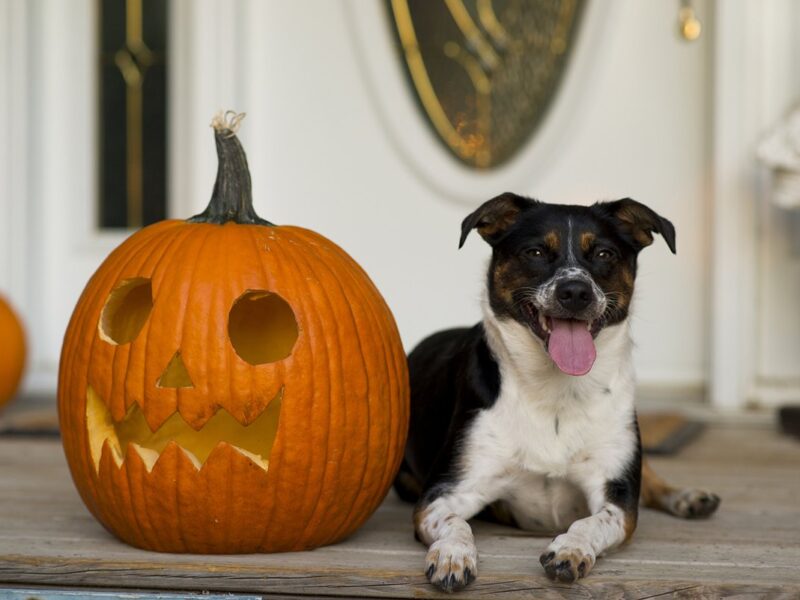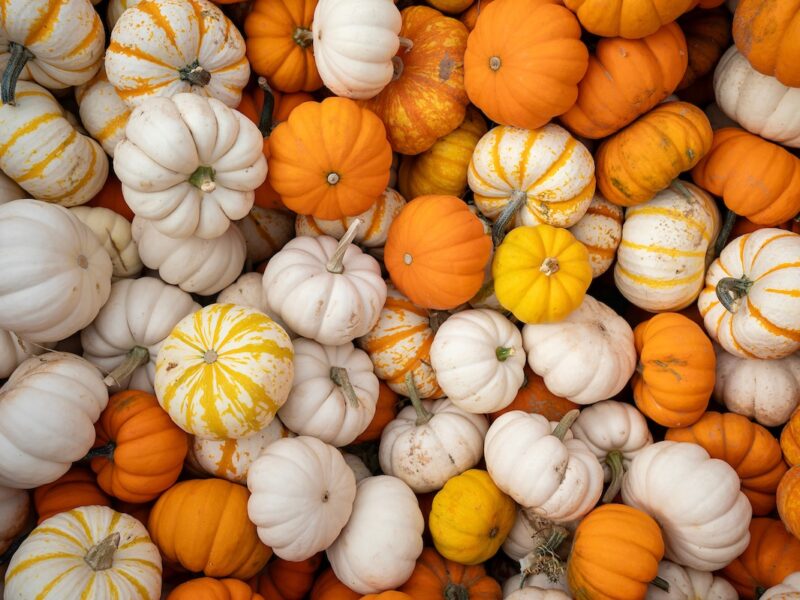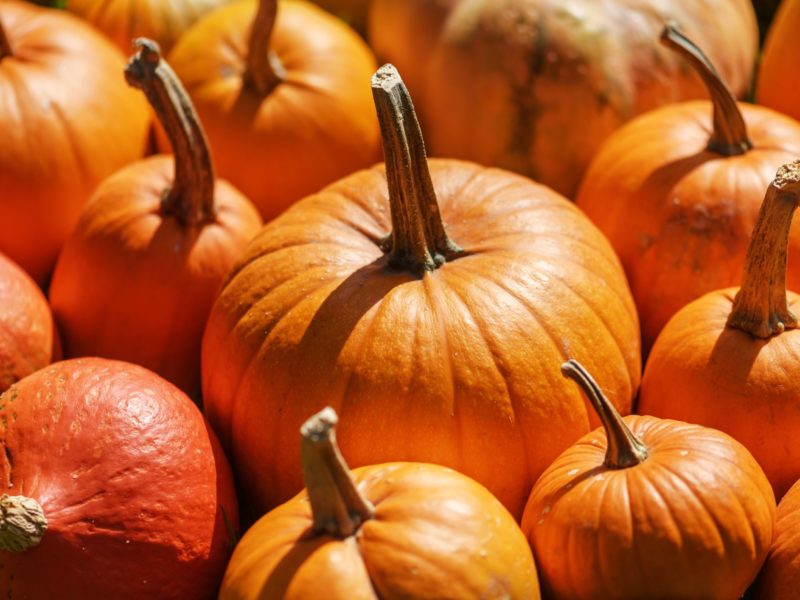Creative Uses For Pumpkins Beyond Halloween

Halloween is over, but that doesn’t mean you have to dump your pumpkin.
From pumpkin spice lattes to harvest-themed front porches, pumpkins are an iconic part of fall. Texas A&M AgriLife Extension Service experts offer some tips on ways to use these popular gourds in and around your home beyond Oct. 31.
Pumpkins that were not carved for jack-o-lanterns can be used to make a host of seasonal treats and beverages, said Odessa Keenan, AgriLife Extension program specialist with the Department of Nutrition.
She added that there are several pumpkin recipes available through the agency’s Dinner Tonight program.
Family-friendly pumpkin recipes
Pumpkin puree is an easy way to utilize the pulp inside, she said. Puree can be used to make sweet treats like pies, parfaits and cookies or savory snacks like hummus.
“If you remove the seeds and pulp to cook, they should be immediately refrigerated or prepared to avoid potential food safety issues,” she noted. “Once you leave the pulp out for more than a couple of hours, you can assume it’s not good to eat.”

The puree should be stored in the refrigerator and will likely last around four days before spoiling, she said.
“The shelf life of the pumpkin puree depends on how fresh it was from the vine when you purchased it, along with its current condition and any potential for bacterial exposure,” she said. “Canning the puree correctly can extend its shelf life up to four months.”
Roasting pumpkin seeds for snacking is another fun way to use your pumpkin, she said.
Use a large spoon or ice cream scoop to remove the pulp, then separate the seeds. Put the seeds in a colander and wash them thoroughly to remove any excess pulp. Dry the seeds as much as possible in between paper towels or a cloth, then toss them in a bowl with cinnamon, brown sugar, nutmeg or whatever other type of seasoning you prefer.
Spread the seeds evenly on a lightly greased cookie sheet and cook at 350 degrees for about 12 to 15 minutes.
Toss them a few times during cooking to help ensure they brown evenly. The roasted seeds are ready when they turn a golden brown.
“You can experiment with different spice blends – savory, spicy and sweet – to find your family’s favorite,” Keenan said. “Just be sure to watch for too much added sodium or sugar.”
Composting and preparing for pumpkin planting
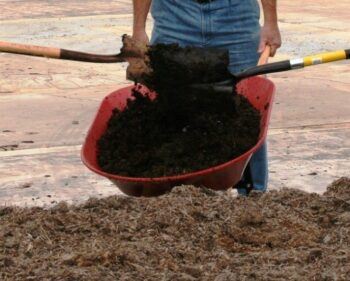
When your pumpkin ultimately decays, the leftover organic matter makes a great addition to a compost pile, said Joe Masabni, Ph.D., assistant professor and AgriLife Extension horticulturist at the Texas A&M AgriLife Research and Extension Center in Dallas.
“It’s best to let it dry first so the rind can break apart into small pieces,” he said. “The smaller the pieces, the faster it will compost.”
Masabni said pumpkin seeds can also be saved to plant by laying them out flat to air dry on paper towels for about 24 hours. Once dry, place them in a plastic bag or store them in the refrigerator or a cool, dry place.
“Don’t heat dry them in an oven or in the sun because it will kill the seeds,” he said. “And mark the bag with the pumpkin variety and date.”
If stored correctly, Masabni said pumpkin seeds can remain viable for at least five years.
Our furry and feathered friends like pumpkin too
People aren’t the only ones that can get enjoyment out of jack-o-lanterns, said Elizabeth Tidwell, a Uvalde-based AgriLife Extension wildlife program specialist in the Department of Rangeland, Wildlife and Fisheries Management.
“Wildlife enjoy pumpkins as a rare and tasty seasonal snack that is packed with vitamins and other nutrients,” she said. “And birds not only enjoy the pumpkin flesh; they also thoroughly enjoy the seeds.”
She said while it is not necessary to bake the seeds for bird food, they will last longer if you place them on a sheet in the oven at 200-300 degrees for 20-30 minutes.

“Just make sure you turn them every few minutes to keep them from burning,” she said. “The preparation for the seeds is similar to what people do when they roast the seeds, but it is important to note that you shouldn’t get fancy with salt or seasonings. Many seasonings that humans enjoy are toxic to birds or can make them very ill.”
Tidwell said people who live in areas with a regular wildlife presence should not under any circumstances use bleach to make their jack-o-lanterns last longer.
“Since jack-o-lanterns are traditionally put outside it is fair game for wildlife to nibble on your pumpkin,” she said. “However, if you use bleach to preserve your pumpkin the wildlife will be consuming the bleach as well as the pumpkin.”
To preserve a pumpkin a little longer, Tidwell recommends using a solution of 10 parts water to 1 part vinegar instead.
She said the pumpkin itself can also be used as a bird feeder and suggested following instructions from the Audubon organization. Finally, she said while animals, such as squirrels, raccoons and deer may be interested in pumpkin pieces, feeding these mammals can create problems and may be against local ordinances.
Creative pumpkin-themed home décor
Now that Halloween is over, Keenan said there are additional uses for pumpkins as home décor.
“Pumpkins make fantastic front porch decorations as well as great fall table centerpieces,” Keenan said. “I have even seen pumpkins used to hold flower arrangements.”
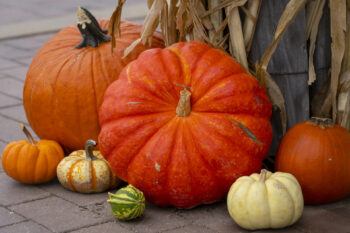
To use a pumpkin to hold your flowers, she advises that it is best to carve out just enough of the pumpkin to hold a vase. Arrange and water the flowers inside the vase to reduce the moisture level inside the pumpkin and keep some space between the pumpkin and the arrangement.
“There are many ways pumpkins can be used indoors and outdoors to give the feeling that fall has arrived — and will be here for a while,” she said.
This article by Paul Schattenberg originally appeared on AgriLife Today.
